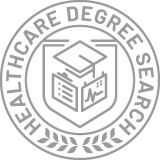Doctor’s Degrees in Other Allied Health Diagnostic, Intervention, and Treatment Professions
Featured schools near , edit
Education Levels of Other Allied Health Diagnostic, Intervention, and Treatment Professions Majors
In 2020-2021, 30 earned their doctor's degree in other allied health diagnostic, intervention, and treatment professions. This earns it the #50 spot on the list of the most popular doctor's degree programs in the nation.
The following table shows the number of diplomas awarded in other allied health diagnostic, intervention, and treatment professions at each degree level.
| Education Level | Number of Grads |
|---|---|
| Basic Certificate | 908 |
| Bachelor’s Degree | 676 |
| Undergraduate Certificate | 175 |
| Associate Degree | 77 |
| Master’s Degree | 36 |
| Doctor’s Degree | 30 |
| Graduate Certificate | 9 |
Earnings of Other Allied Health Diagnostic, Intervention, and Treatment Professions Majors With Doctor’s Degrees
We are unable to calculate the median earnings for other allied health diagnostic, intervention, and treatment professions majors with their doctor's degree due to lack of data.
Student Debt
The data on debt ranges for other allied health diagnostic, intervention, and treatment professions majors who have their doctor's degree is not available.
Student Diversity
More women than men pursue their doctor's degree in other allied health diagnostic, intervention, and treatment professions. About 53.3% of graduates with this degree are female.
| Gender | Number of Grads |
|---|---|
| Men | 14 |
| Women | 16 |

The racial-ethnic distribution of other allied health diagnostic, intervention, and treatment professions doctor’s degree students is as follows:
| Race/Ethnicity | Number of Grads |
|---|---|
| Asian | 1 |
| Black or African American | 2 |
| Hispanic or Latino | 0 |
| White | 25 |
| International Students | 0 |
| Other Races/Ethnicities | 2 |

Most Popular Other Allied Health Diagnostic, Intervention, and Treatment Professions Programs for Doctor’s Degrees
There are 2 colleges that offer a doctor’s degree in other allied health diagnostic, intervention, and treatment professions. Learn more about the most popular 2 below:
The most popular school in the United States for other allied health diagnostic, intervention, and treatment professions students seekinga doctor's degree is Rocky Mountain University of Health Professions. Roughly 1,100 attend the school each year. The other allied health diagnostic, intervention, and treatment professions program at Rocky Mountain University of Health Professions awarded 18 doctor's degrees during the 2020-2021 school year. Of these students, 56% were women and 11% were members of underrepresented racial-ethnic groups.
Moravian College is the 2nd most popular school in the nation for students seeking a doctor's degree in other allied health diagnostic, intervention, and treatment professions. Roughly 2,600 attend the school each year. The average in-state tuition for full-time undergraduates is $46,799 per year, while in-state graduate students, on average, pay $17,874 per year. The other allied health diagnostic, intervention, and treatment professions program at Moravian College awarded 12 doctor's degrees during the 2020-2021 school year. Of these students, 50% were women and 8% were members of underrepresented racial-ethnic groups.
Explore Major by State
Alabama
Arkansas
Connecticut
Florida
Idaho
Iowa
Louisiana
Massachusetts
Mississippi
Nebraska
New Jersey
North Carolina
Oklahoma
Rhode Island
Tennessee
Vermont
West Virginia
Related Majors
Below are some popular majors that are similar to other allied health diagnostic, intervention, and treatment professions that offer doctor’s degrees.
| Major | Annual Degrees Awarded |
|---|---|
| Physician Assistant | 421 |
| Athletic Training | 74 |
| Gene Therapy | 4 |
| Medical Radiologic Technology | 3 |
| Radiologic Technology | 1 |
References
*The racial-ethnic minority student count is calculated by taking the total number of students and subtracting white students, international students, and students whose race/ethnicity was unknown. This number is then divided by the total number of students at the school to obtain the percentage of racial-ethnic minorities.
More about our data sources and methodologies.
Featured Schools
 Request Info
Request Info
|
Southern New Hampshire University You have goals. Southern New Hampshire University can help you get there. Whether you need a bachelor's degree to get into a career or want a master's degree to move up in your current career, SNHU has an online program for you. Find your degree from over 200 online programs. Learn More > |


